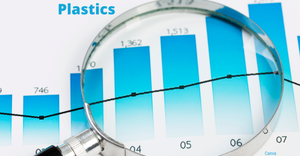This quixotic quest is doomed to fail. Here are just a few reasons why that’s a good thing.
May 24, 2023

So, May 25 is International Plastic Free Day, not to be confused with International Plastic Bag Free Day, which is on July 3. I tried to find the origins of Plastic Free Day, but when I Googled it, Plastic Bag Free Day came up repeatedly. The few hits I did get for Plastic Free Day sent me to the website of an organization called Free the Ocean. As you might imagine, an overarching theme of the site is preventing and removing ocean plastics. One feature on the site is a daily trivia question, with each correct answer resulting in the removal of “one piece of plastic from the ocean and coastlines.��” There’s also merch, of course: Numerous plastic-free products are showcased on the site, and for each purchase, Free the Ocean will remove 10 pieces of plastic from the ocean. (The website explains the process, but color me skeptical.)
That’s all fine, but the notion of going plastic free for an entire day — an abbreviated secular version of Lent in some strange way — strikes me as ludicrous. Here’s why.
Observe what you’re doing right now and may be doing in a short while. Taking myself as an example: I’m typing on the plastic keys of my laptop to write this article. Being older than I like to think I am, I take some daily meds that almost exclusively come in plastic containers. I might want to grab something for lunch at the artisanal bakery down the street, but they went cash-free during the pandemic and continue to accept only debit and credit cards, which are almost exclusively made of plastic. It’s too far to walk, so I would need to drive. Most cars have a lot of plastic in them — approximately 411 pounds, according to the American Chemistry Council, which represents less than 10% of an average vehicle’s weight yet accounts for approximately 50% of its volume — and that’s a good thing because it makes automobiles lighter and more fuel-efficient. If I had an electric vehicle, it wouldn’t make much difference — plastic parts abound in them, too. I could go on and on, but you get the point, or rather, how pointless it is to try and go plastic free for a day.
Need more? Check out these slides detailing just a handful of ways in which plastics are saving lives, combating food waste, preserving resources, and contributing to energy efficiency and mobility.
About the Author(s)
You May Also Like




